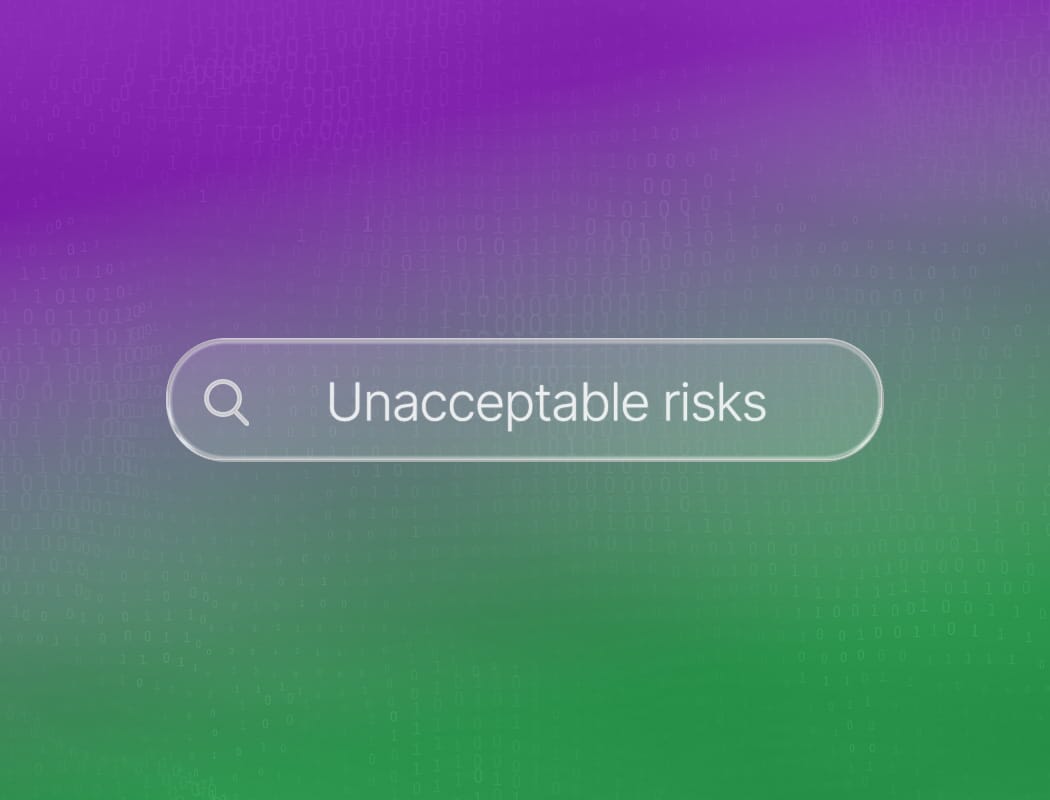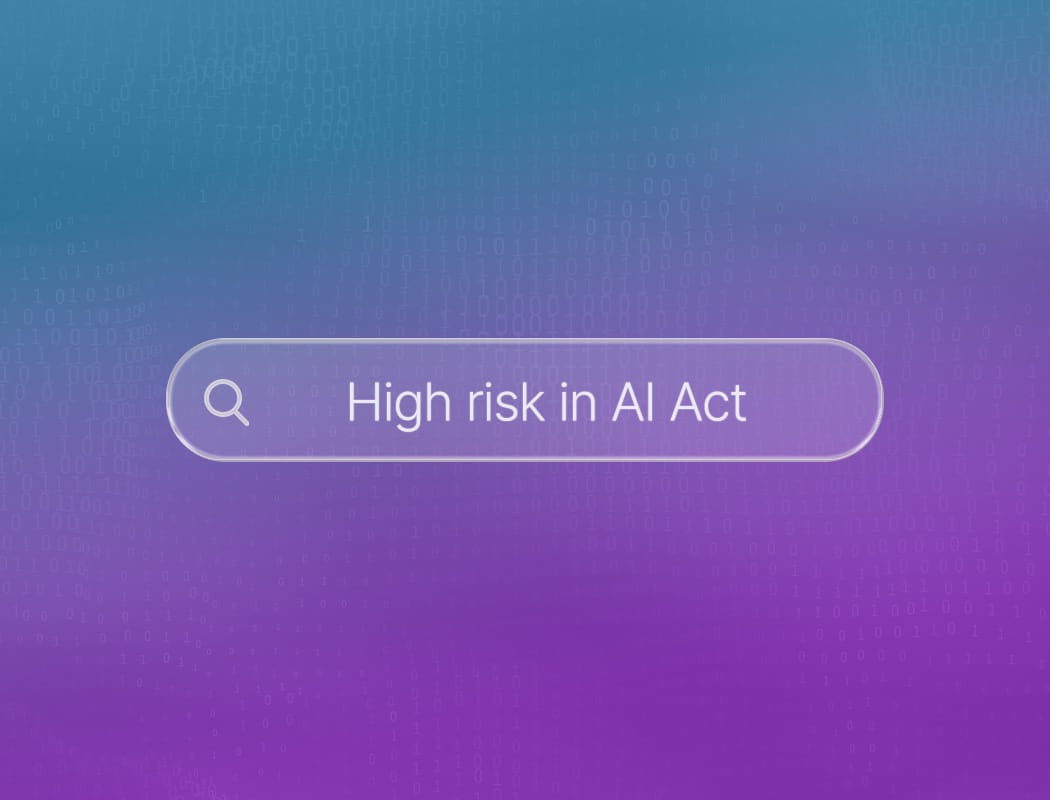What is the AI Act?
The AI Act is a new set of rules created by the European Union. Its main goal is to make sure artificial intelligence is used safely and fairly across Europe.
At its core, the European AI Act applies a risk-based approach. This means that AI systems are classified and regulated depending on the level of risk they pose to individuals or society. The risk-levels of the AI Act are:
- Unacceptable risk: AI systems that pose a clear threat to people’s rights, safety, or democratic values are strictly prohibited.
- High risk: AI systems used in sensitive sectors (e.g., biometrics, education) that can significantly affect people’s rights, safety, or access to opportunities.
- Limited risk: AI systems subject to transparency obligations, where users must be made aware they are interacting with AI.
- Minimal risk: AI systems with little or no regulatory concern, covering the majority of everyday applications.
Companies must be transparent about how their AI works and keep detailed records. They also need to test their systems for safety and fairness before launching them. The goal is to protect people while still allowing AI to grow and improve.
The AI Act covers a range of topics, including risk levels, rules for providers and users, governance, and implementation timelines. One of these topics is AI literacy. This is focusing on helping people understand and safely interact with AI.
General purpose AI (GPAI)
General Purpose AI (GPAI) refers to powerful AI models that can do many different tasks, like answering questions, generating text or images, and supporting other AI systems.
The AI Act says that all GPAI providers need to be transparent about how their models are trained. They must publish a summary of the training data they used, and make sure they respect copyright rules.
If the model is so large and powerful that it could create wider risks (called systemic risk), then the provider has extra responsibilities. This can include responsibilities like testing the model for safety, reporting serious issues, and protecting it against cyberattacks.
Who the AI Act applies to
The AI Act doesn’t just cover tech companies in Europe, it applies to anyone putting AI on the EU market. The biggest responsibilities fall on providers (developers) who build the systems, while deployers (companies using AI in their work) must make sure they use these tools responsibly.
Ordinary people aren’t regulated at all, the rules are there to protect them. And even if you’re based outside the EU, the Act still applies if your AI is used inside Europe.
Which organizations are affected by the AI Act?
The AI Act casts a wide net. Any organization that develops, deploys, or uses artificial intelligence within the European Union will feel its impact. This includes startups, established businesses, public sector bodies, and even non-profits.
The AI Act aims to ensure that everyone who touches AI technology follows the same set of rules, no matter their size or industry. If your organization uses AI to make decisions, analyze data, or automate tasks, you are likely affected.
Who falls under the scope of the AI Act
The reach of the AI Act is broad by design. It covers organizations based in the EU as well as those outside the EU if their AI systems affect people within the region.
This means a company in the United States or Asia could be subject to the AI Act if it offers AI-powered services to EU customers. The law also applies to providers, importers, distributors, and users of AI systems. Even organizations that only use third-party AI tools must pay attention, as they share responsibility for compliance.
What types of activities are regulated
The AI Act regulates a range of activities involving artificial intelligence. It focuses on how AI is developed, tested, marketed, and used.
High-risk AI applications, such as those in healthcare, transportation, or law enforcement, face stricter requirements. Organizations must assess risks, maintain transparency, and provide clear documentation about their AI systems.
The law also restricts certain uses of AI, like social scoring or real-time biometric surveillance in public spaces. By setting these boundaries, the AI Act seeks to protect fundamental rights and foster innovation at the same time.
How does the AI Act impact technology development?
The AI Act is changing the way technology companies build and release new products. It sets out clear rules for how artificial intelligence should be designed, tested, and monitored.
The result is a slower but more thoughtful approach to innovation. While some see this as a hurdle, others believe it will lead to better, more trustworthy technology in the long run.
Setting new standards for safety and transparency
Before the AI Act, companies could operate on the principle of “move fast and break things.” Now, that mindset is being replaced by a focus on safety and transparency.
Developers are required to document how their AI systems work and what data they use. This documentation isn’t just for internal use. It must be available to regulators and, in some cases, to the public. The goal is to make sure everyone understands how decisions are made by these systems.
This shift encourages teams to think carefully about every line of code and every dataset. It also means that shortcuts and hidden risks are less likely to slip through the cracks.
Encouraging responsible innovation
With the AI Act in place, the days of unchecked experimentation are over. But that doesn’t mean innovation stops. Instead, it focuses more on responsible AI. Companies are now incentivized to create technology that not only works but also respects privacy and human rights. This includes building in safeguards against bias and discrimination.
The act pushes organizations to test their products thoroughly before launch. They must prove that their systems are fair and reliable. This process may take more time and resources, but it leads to stronger, more ethical solutions. In the end, users benefit from tools they can trust.
Shaping global competition and collaboration
The impact of the AI Act goes beyond Europe’s borders. As one of the first comprehensive regulations of its kind, it sets a benchmark for other countries to follow. Technology companies around the world are watching closely.
Many are choosing to align their practices with the AI Act, even if they don’t operate in Europe. This creates a more level playing field and encourages global collaboration. In this way, the AI Act is not just shaping technology development in Europe, but influencing the future of AI worldwide.





